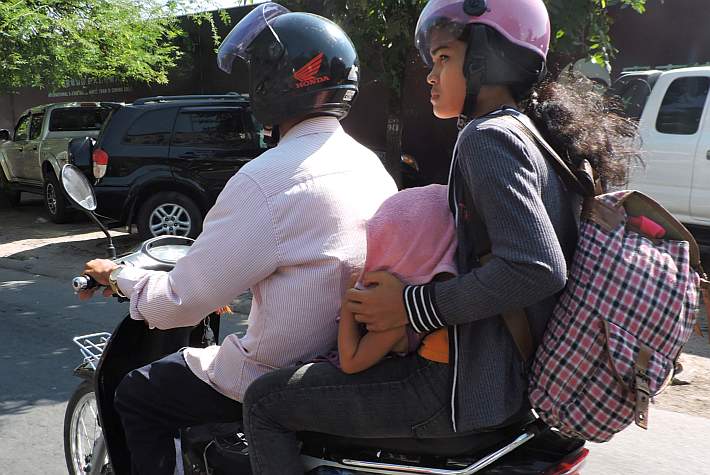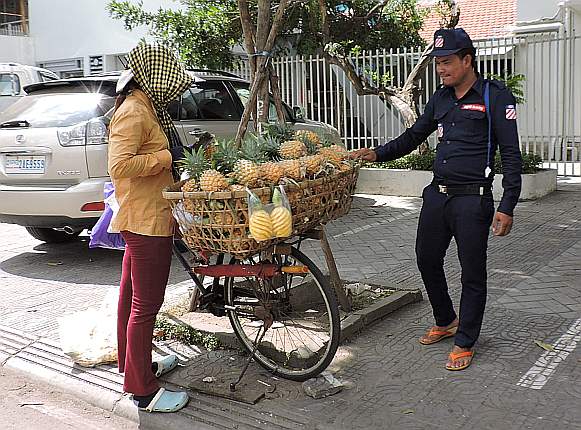
from a street vendor would make a good snack.
Charlie Dittmeier's Home Page

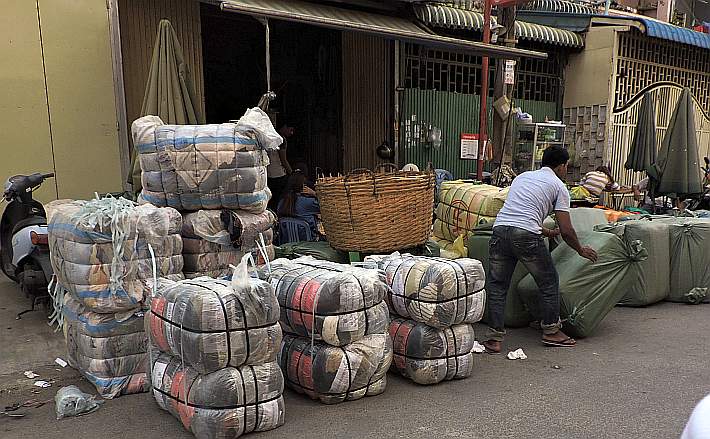
There are hundreds of garment factories in Cambodia, taking advantage of the vast pool of cheap (because unskilled) labor. Most of the garments go into containers at the factory and head straight for a cargo ship. But then there are the rejects, the overruns, the canceled orders, and all the other pieces that stay in Cambodia. Many of them get sold on the streets. You don’t buy a six-pack but rather a six hundred-pack of whatever it is!
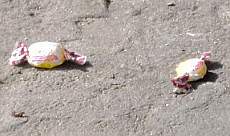
There is a custom in Cambodia of throwing hard candy into the street in front of some shops. Click here to see some examples.
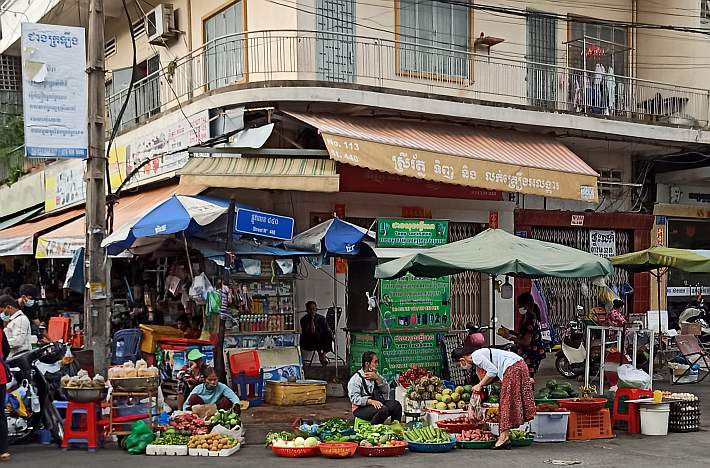
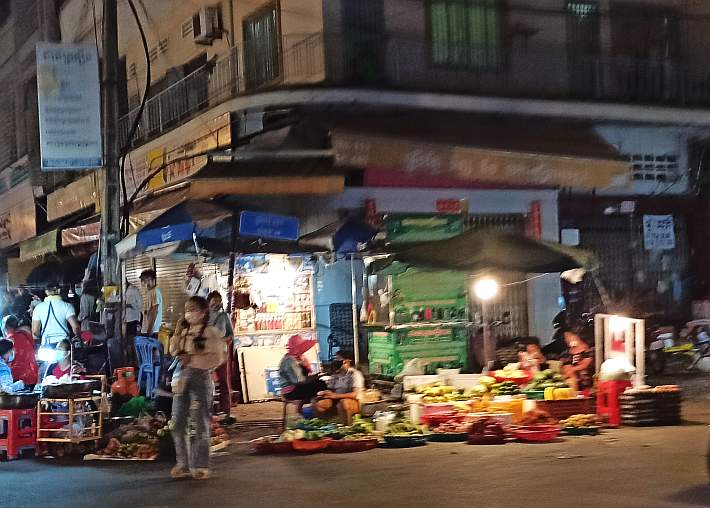
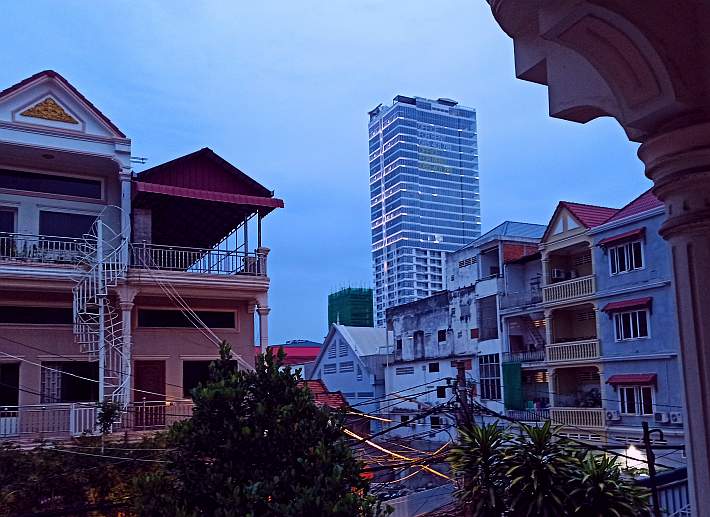
I prepared a photo yesterday and was getting ready to post it when I got a call from the United States that caused me to return to the DDP office at night. Then when I got back home, I had to call the U.S. again and I forgot to post the photo.
And now I forgot what the photo was and what category it is in, so I can’t find it! One of these days I will get back to that category and find it and be able post it then!
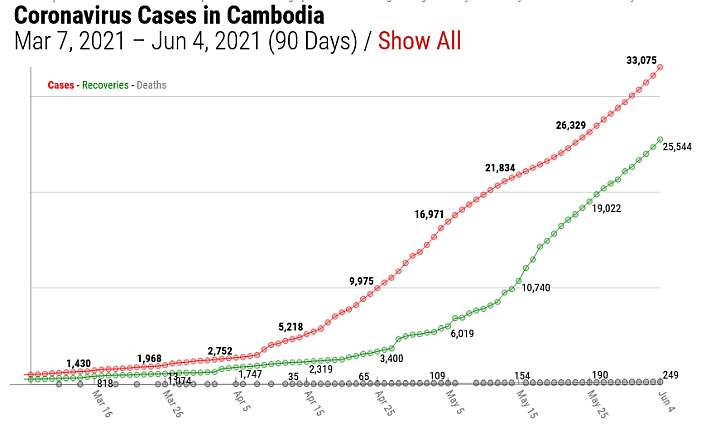
Two days ago the government imposed another round of business closures. It’s not a general lockdown but all non-essential businesses are to shut their doors for two weeks. The graph above, from VODenglish.news, shows why. We have had restrictions since 15 April–including three weeks of lockdown–but the graph seems to get worse, not better.
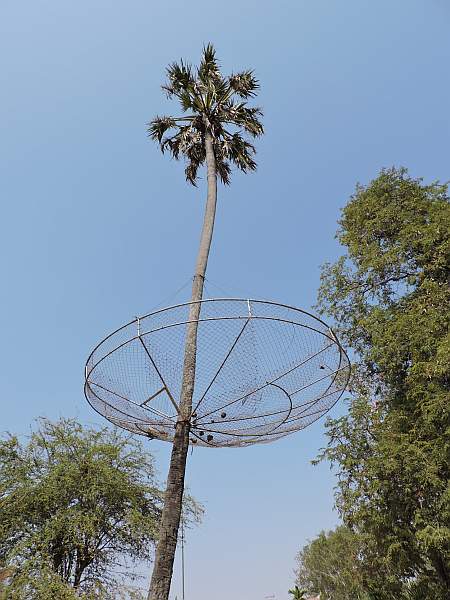
You may go your whole life in the US and never see something like this. Palm trees you may encounter in parts of the southern US, but the big wire thing? It’s a coconut catcher. They aren’t too common even here in Cambodia, but in some places with a lot people walking around and with a lot of palm trees with a lot of coconuts, they can be literally life-saving devices. Coconuts are heavy–maybe 3 to 5 lbs–with thick, heavy husks. One falling on a person’s head from 50 feet can be fatal.
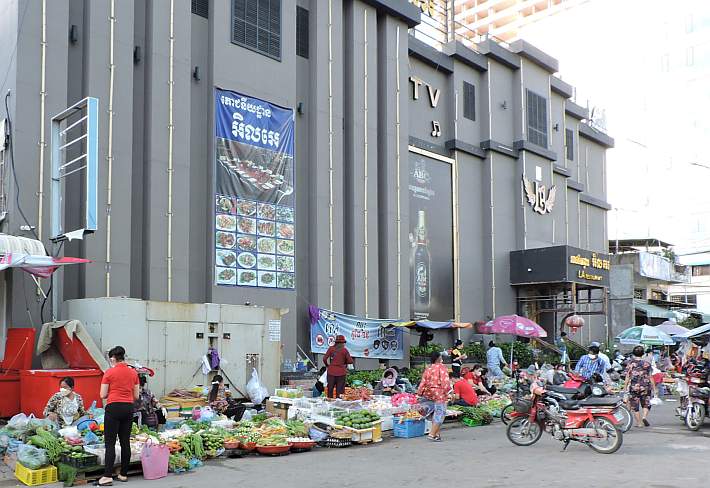
This big grey building housed a karaoke center pre-Covid-19. Then when the government closed all such gathering places, they reopened as restaurants–at least officially. Stories keep appearing in the papers of the music still going on inside. This place placed the name “LA Restaurant” over the entranceway and hung up a sign of various dishes, and, voila, a restaurant! During the morning marketing time, vendors fill the street in front of the hall.
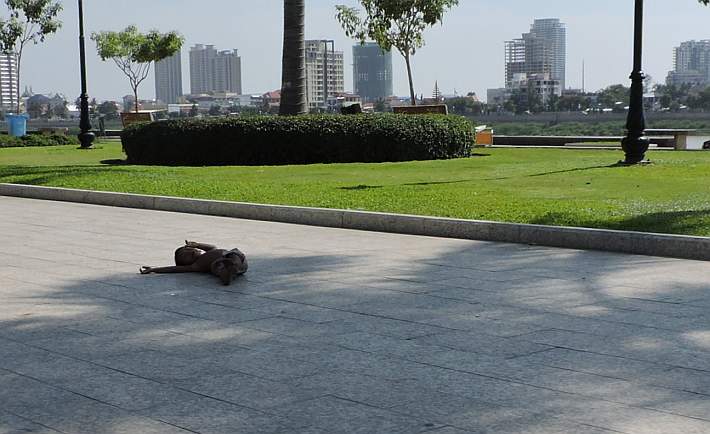
Two children, one playing alone on the riverfront in Phnom Penh, the other cradled by his mother. May they both survive and thrive….
